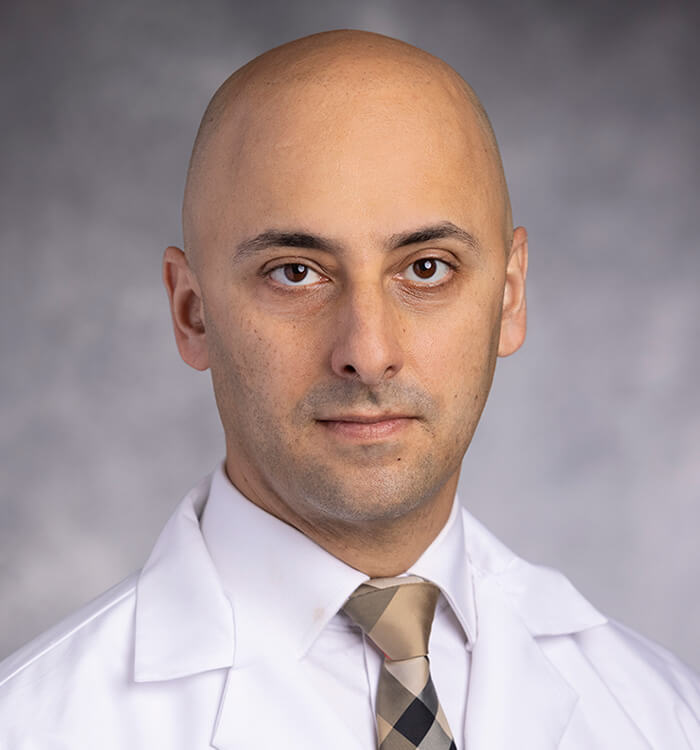Fellowship Trained Sleep Surgeon Joins University Hospitals Ear Nose and Throat Institute
November 16, 2022
Innovations in Ear, Nose & Throat | Fall 2022
One of the areas of medical specialization becoming increasingly important in recent years is sleep surgery. “As awareness grows about the connection between sleep quality and cardiovascular health, brain health and metabolism, there is national interest in ensuring that people address their sleep issues — particularly obstructive sleep apnea [OSA], says Nicole Maronian, MD, FACS, Director of the University Hospitals Ear, Nose & Throat Institute. “We are thrilled to welcome Dr. Fleury as our newest fellowship-trained sleep surgeon and excited for the pivotal role he will play in our department, improving sleep quality for our patients and mentoring our residents and fellows.”
 Thomaz Fleury Curado, MD, PhD
Thomaz Fleury Curado, MD, PhDThomaz Fleury Curado, MD, PhD, is an otolaryngologist and craniofacial surgeon who is providing novel treatments for patients with OSA. After completing his medical training and residency in Brazil, Dr. Fleury earned his doctorate through a partnership between the University of São Paulo and Johns Hopkins University. He continued at Johns Hopkins as a research fellow and faculty member prior to completing a sleep surgery fellowship at Stanford University. “Stanford is really the birthplace of sleep surgery,” he says. “Experts there have been focusing on the surgical approaches to obstructive sleep apnea for over three decades.”
Dr. Fleury’s expertise will add to the multidisciplinary team of sleep medicine specialists offering comprehensive care to Cleveland’s growing number of people seeking solutions for a better night’s rest. “Our goal is to treat patients in the most personalized and innovative manner possible,” says Dr. Maronian. “With the expertise and techniques he brings, Dr. Fleury will accelerate our sleep surgery and research program.”
He will also see patients in clinic at two primary locations, as well as virtually. “Obstructive sleep apnea plagues people throughout the United States and can create several health complications down the line,” he says. “Conservative estimates indicate that about 30 percent of the population is impacted, but the condition has not received adequate attention until recently."
Innovations in OSA Treatment
Continuous positive airway pressure (CPAP) is recognized as the gold-standard clinical treatment for OSA. However, patient non-compliance can limit its effectiveness. Sleep surgery can address anatomical and airway challenges to improve OSA or increase the benefit of CPAP treatment. “We should be breathing through our nose, especially at night,” says Dr. Fleury. From minimally invasive procedures to open skeletal surgeries, he tailors individualized solutions for each patient.
Some of the procedures he offers include:
- Nasal valve repair and nasal expansion corrects nasal inward collapse of the nasal sidewall that limits nasal breathing.
- Septoplasty is a surgical procedure to address bones and cartilage in the nasal septum.
- Maxillomandibular advancement is a procedure to bring upper and lower jaws forward, positioning them adequately to provide strong airway support.
- Distraction Osteogenesis Maxillary Expansion (DOME) was developed at Stanford, and is the minimally invasive procedure involves breaking the jaw at the midline to place expanders. Using a key, patients gradually widen their expanders over time. “This will create significantly more space in the upper airway,” says Dr. Fleury. “The procedure was initially developed to correct dental overcrowding, but it is now established in the literature as a solution to improve nasal breathing and upper airway obstruction.” The surgery is well-tolerated, and patients are able to return home the same day.
- Soft palate interventions use sutures to support the soft palate. “Traditionally, sleep surgery has focused on the palate because it is easy to access, and the surgical techniques are known to many ENTs,” says Dr. Fleury. “However, the outcomes were found to be suboptimal and even harmful long term because functional muscles were removed.” Advancements in techniques avoid aggressive procedures, resulting in more physiologic interventions that yield lasting positive outcomes.
- Tongue-based procedures and INSPIRE - The tongue is the main upper airway dilator. Dr. Fleury’s research led to a novel approach for lingual muscle stimulation that targets precise motor neurons. He received grant funding as a recipient of the prestigious American Heart Career Award, which will help support the continuation of his research at University Hospitals. “Currently, there are implantable devices similar to pacemakers that have FDA [Food and Drug Administration] approval for stimulating lingual motor neurons, but there are also emerging technologies that we hope will lead to additional translational therapies,” he says.
For more information, contact Dr. Fleury at Thomaz.FleuryCurado@UHhospitals.org.
Contributing Experts:Thomaz Fleury Curado, MD, PhD
Otolaryngology-General, Otolaryngology-Sleep Surgery
UH Ear, Nose & Throat Institute
Nicole Maronian, MD, FACS
Richard W. and Patricia R. Pogue Leadership Chair in Otolaryngology - HNS
Director, UH Ear, Nose & Throat Institute
Department of Otolaryngology – Head and Neck Surgery
Julius W. McCall Professor and Chair
Case Western Reserve University School of Medicine


